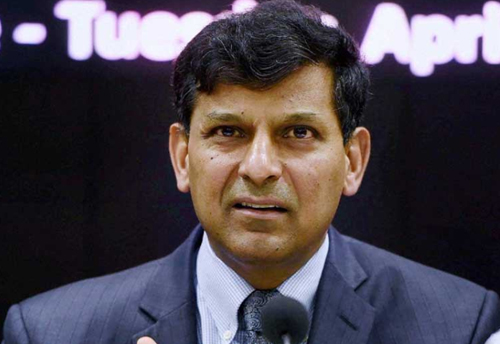Reluctance to lend to industry & SMEs is more visible among more stressed PSBs: Rajan
Updated: Aug 30, 2016 10:33:18am

Reluctance to lend to industry & SMEs is more visible among more stressed PSBs: Rajan
New Delhi, Aug 30 (KNN) The reluctance to lend to industry and small businesses is more visible among the more stressed public sector banks compared to the private sector banks, said RBI Governor Raghuram Rajan whose term as the apex bank chief ends this week.
In the Foreword to Annual Report 2015-16, the Governor said, “Both the Government and RBI have been engaged in the last few years in restoring macroeconomic stability to the economy. While the policy actions have had positive effects, there are a number of areas which should be considered “work in progress”.
He said from RBI’s perspective, three such areas continue to be of importance - economic growth, inflation and lending rates
“First, economic growth, while showing signs of picking up, is still below levels that the country is capable of. The key weakness is in investment, with private corporate investment subdued because of low capacity utilisation, and public investment slow in rolling out in some sectors,” Rajan said.
Second, inflation projections are still at the upper limits of RBI’s inflation objective. With the Reserve Bank needing to balance savers’ desire for positive real interest rates with corporate investors’ and retail borrowers’ need for low nominal borrowing rates, the room to cut policy rates can emerge only if inflation is projected to fall further.
Third, the willingness of banks to cut lending rates is muted; not only does weak corporate investment reduce the volume of new profitable loans, their stressed assets have tightened capital positions, which may prevent them from lending freely.
“Certainly, the reluctance to lend to industry and small businesses is more visible among the more stressed public sector banks compared to the private sector banks,” he added.
While these areas of concern have not changed significantly over the year, there have been some developments that bode well.
Expectations of a good monsoon (corroborated thus far) coupled with more money in the hands of government servants (as a result of the implementation of the 7th Pay Commission recommendations) should boost consumer demand. With final demand picking up, capacity utilisation is likely to increase, and so will investment. A virtuous cycle of growth is possible, reinforced by anticipation of the coming benefits from reforms like the recently passed Goods and Services Tax legislation in Parliament, the Governor said.
Talking about the stressed assets and speedy resolution, he said a third area of short term focus with macroeconomic relevance is stressed asset resolution. The Asset Quality Review initiated in early 2015-16 has improved recognition of NPAs and provisioning in banks enormously. Some banks have taken significant steps in recognising incipient stress early.
On Medium Term Reforms, Rajan said, “We need more participation in our financial markets to increase their size, depth, and liquidity. Participation is best enhanced not through subventions and subsidies but by creating supporting frameworks and new institutions that improve transparency, contract enforcement, and protections for market participants against abusive practices.”
Technology can be very helpful in reducing the costs of the supportive frameworks, and can bring hitherto excluded populations into the financial fold. (KNN Bureau)












